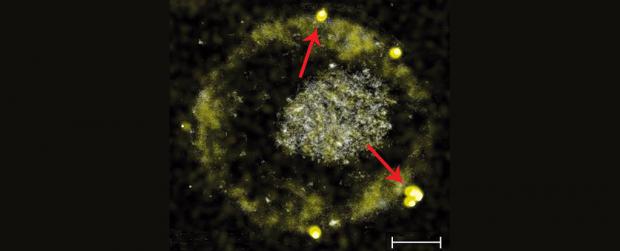
Breaking News
 WATCH: Russia Downs Drone With Laser - Is This The Future Of Drone Defense?
WATCH: Russia Downs Drone With Laser - Is This The Future Of Drone Defense?
 What on earth is Trump up to regarding Ozempic?
What on earth is Trump up to regarding Ozempic?
 Charged with 7 Counts of Espionage for the TRUTH | John Kiriakou
Charged with 7 Counts of Espionage for the TRUTH | John Kiriakou
Top Tech News
 Goodbye, Cavities? Scientists Just Found a Way to Regrow Tooth Enamel
Goodbye, Cavities? Scientists Just Found a Way to Regrow Tooth Enamel
 Scientists Say They've Figured Out How to Transcribe Your Thoughts From an MRI Scan
Scientists Say They've Figured Out How to Transcribe Your Thoughts From an MRI Scan
 SanDisk stuffed 1 TB of storage into the smallest Type-C thumb drive ever
SanDisk stuffed 1 TB of storage into the smallest Type-C thumb drive ever
 Calling Dr. Grok. Can AI Do Better than Your Primary Physician?
Calling Dr. Grok. Can AI Do Better than Your Primary Physician?
 HUGE 32kWh LiFePO4 DIY Battery w/ 628Ah Cells! 90 Minute Build
HUGE 32kWh LiFePO4 DIY Battery w/ 628Ah Cells! 90 Minute Build
 What Has Bitcoin Become 17 Years After Satoshi Nakamoto Published The Whitepaper?
What Has Bitcoin Become 17 Years After Satoshi Nakamoto Published The Whitepaper?
 Japan just injected artificial blood into a human. No blood type needed. No refrigeration.
Japan just injected artificial blood into a human. No blood type needed. No refrigeration.
 The 6 Best LLM Tools To Run Models Locally
The 6 Best LLM Tools To Run Models Locally
 Testing My First Sodium-Ion Solar Battery
Testing My First Sodium-Ion Solar Battery
 A man once paralyzed from the waist down now stands on his own, not with machines or wires,...
A man once paralyzed from the waist down now stands on his own, not with machines or wires,...
These Bacteria Digest Toxic Metals And Poop Out Tiny Gold Nuggets

An international team of researchers has figured out how one metal-gobbling bacterium, Cupriavidus metallidurans, manages to ingest toxic metallic compounds and still thrive, producing tiny gold nuggets as a side-effect.
Just like many other elements, gold can move through what's known as a biogeochemical cycle - being dissolved, shifted around, and eventually re-concentrated in Earth's sediment.
Microbes are involved in every step of this process, which has led scientists to wonder how they don't get poisoned by the highly toxic compounds that gold ions usually form in the soil.

 The Hidden World War
The Hidden World War

